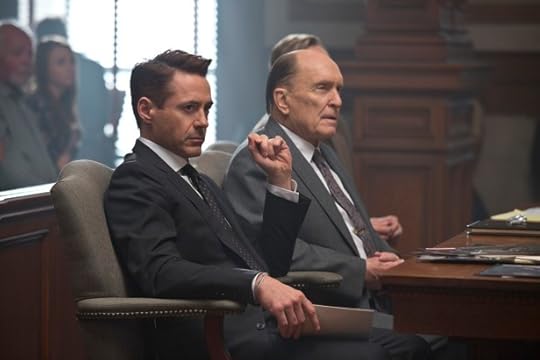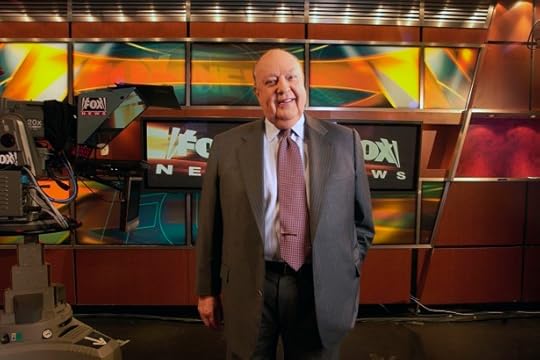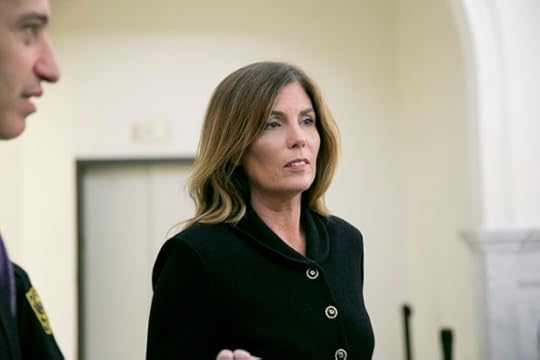Atlantic Monthly Contributors's Blog, page 98
August 17, 2016
Star Wars: A New Droid

Last Saturday, the lead actor from the original Star Wars died, though few people thought of him as such. Kenny Baker was, of course, not as famous as Mark Hamill, Carrie Fisher, and Harrison Ford. But R2-D2, the droid given life by Baker from inside a blue and white mobile garbage can, drove much of the action for A New Hope, as he did in subtler ways in the original sequels, the prequels, and The Force Awakens. In 2005, when George Lucas was asked which Star Wars character he’d miss the most, he named R2-D2. “He's the hero of the whole thing,” Lucas said. “He's the one that always comes through and saves everybody.”
Droids are as responsible for Star Wars’s Star Wars-ness as the Force or daddy issues are. The special emotional blend of original trilogy is in in the melding of R2-D2’s wry, can-do unflappability with C-3PO’s nerdy, terrified wonder. The bad humor, dull reasoning, and interchangeable personalities of The Phantom Menace’s battle droids certainly can be seen as a microcosm for that film. And like the The Force Awakens itself, BB-8 was zippy, adorable, derivative, and eager to please. In all cases, as the galaxy’s great helpers (every few years, someone writes a think piece about how the films are problematic because the bots are actually slaves) droids’ competence and comedy both enable their masters’ adventures and keep their melodrama from getting too serious.
The prompt for thinking about droids right now is not only Baker’s death but also the steadily rising hype for Rogue One, out on December 16. The first in Disney’s one-off Star Wars films that will alternate release years with the franchise’s proper sequels, it tells of the Rebel spies who stole the plans for the Death Star immediately before the events of A New Hope. The full-length trailer that recently premiered during Olympics coverage promises a slick, serious ensemble film with some very cool-looking tweaks of existing Star Wars tropes from Imperial Walkers to desert planets. Perhaps the most intriguing element on display—both familiar and radical within the tradition of Star Wars—is the new droid character, K-2SO.
Visually, K-2SO recalls not his colorful Star Wars predecessors but rather a more archetypical sci-fi robot, gunmetal grey and bipedal, tall enough to make the obvious Iron Giant comparisons relevant. Voiced by Alan Tudyk of Firefly fame, K-2SO tells Rogue One’s protagonist, Jyn Erso (Felicity Jones), “The captain says you are a friend. I will not kill you.” It’s a jarring thing to hear from a Star Wars droid-ally: Can you imagine C-3PO threatening anyone’s life? The filmmakers seem to want us to be drawing such contrasts between the gold-plated protocol droid and this new bot. “There is a 97.6 percent chance of failure,” K-2SO says elsewhere in the trailer, a clear throwback to C-3PO’s pesky tendency of telling Han Solo’s crew their dreadful odds of survival.
The movie’s publicity campaign has given more information about where K-2SO might fit in the droid-hero tradition of the series. (Read no further if you want to avoid knowing anything about the film’s plot outside of what the trailers have shown). As the insignia on K-2SO’s shoulder indicates, he was once Imperial property: a security bot, used as a violent “enforcer.” Rebel pilot Cassian Andor (Diego Luna) reprogrammed him to side against the Empire, but it’s clear he still has dangerous capabilities. Interestingly, EW’s preview of Rogue One says that the droid is “seeking a bit of redemption.”
K-2SO may show that the porous boundary between dark and light concerns machines as well as man.
Even so, it appears he shall continue in the historical droidly role of comic relief. Tudyk has said K-2SO “has no filter... he can say insulting things very casually if he thinks they’re true.” He’s also said, “He’s not an overly emotional guy … He’s not like C-3PO, who’s like a fucking neurotic mess.” The moment in the trailer when he blurts about not killing Jyn confirms that description. This is a darker kind of humor than is typical for Star Wars, but one in line with the grittier tone that’s been promised for Rogue One.
Moreover, the fact that this droid has crossed from working for the Empire to working for the Alliance signals that Disney’s Star Wars are continuing their exploration of moral side-switching. Finn, The Force Awakens’ turncoat stormtrooper, represented the movie series’ first significant glimpse into what life’s like for rank-and-file employees of the Dark Side. Now, both K-2SO and a new character named Bodhi (Riz Ahmed) have gone from working for the Empire to working for its enemies. And the Rogue One trailer promises that much of the movie will revolve around Jyn Erso heading undercover as an Imperial.
Flipping between dark and light is, of course, the foundational conflict of the entire saga, seen in the arc of Anakin Skywalker. It’s possibly much the same conflict that will define the story of Rey and Kylo Ren in the future sequels. From what we know now, K-2SO may not compete with R2-D2 to become the iconic fan-favorite droids of the series, but he will show that the porous boundary between good and evil is one that concerns machines as well as man.

August 16, 2016
Marina Abramovic and the White Artist's Gaze

In advanced copies of the performance artist Marina Abramovic’s forthcoming memoir, one passage presents the Aboriginal people of Australia as if they are something other than human:
They look like dinosaurs. They are really strange and different, and they should be treated as living treasures. Yet they are not.
But at the same time, when you first meet them, you have to put effort into it. For one thing, to Western eyes they look terrible. Their faces are like no other faces on earth; they have big torsos (just one bad result of their encounter with Western civilisation is a high sugar diet that bloats their bodies) and sticklike legs.
Outrage ensued after the excerpt leaked online, giving rise to the hashtag #TheRacistIsPresent, a reference to Abramovic’s 2010 MoMA performance The Artist Is Present. Abramovic quickly posted an explanation on Facebook: “The description contained in an early, uncorrected proof of my forthcoming book is taken from my diaries and reflect my initial reaction to these people when I encountered them for the very first time way back in 1979. It does not represent the understanding and appreciation of Aborigines that I subsequently acquired through immersion in their world and carry in my heart today.”
The scandal comes a week after another major art-world figure, Vanessa Beecroft, drew reproach for a New York Magazine profile by Amy Larocca wherein Beecroft talked about her collaboration with Kanye West in strange racial terms:
“I have divided my personality,” she says. “There is Vanessa Beecroft as a European white female, and then there is Vanessa Beecroft as Kanye, an African-American male.” Later she tells me, “I even did a DNA test thinking maybe I am black? I actually wasn’t. I was kind of disappointed, and I don’t want to believe it. I want to do it again, because when I work with Africans or African-Americans, I feel that I am autobiographical. If I don’t call myself white, maybe I am not.”
That quote was just one of many in the article that betrayed an obsession with black peoples’ bodies, an obsession that has been a long-running theme in Beecroft’s divisive career. “Perhaps what makes this statement, and so many others quoted in the Larocca profile, so uncomfortable is that Beecroft repeatedly expresses an interest in being black, but in a way that is totally divorced from the social issues connected with being black,” wrote Carolina A. Miranda in a response published in The Los Angeles Times.
These controversies involved different contexts, but both arose from well-off white European artists participating in a very long tradition of fetishizing otherness. Whether in an old diary entry or not, Abramovic treated a nonwhite peoples’ physical features as not only repulsively exotic but deterministically so—a bodily manifestation of some soul-level difference. Beecroft did something similar. She suggested that race is not socially constructed but intrinsic, though she wished that through art she could mutate her DNA. She fantasized about blackness being a fun costume that she, sadly, has not been allowed to wear—a point of view insensitive to the reality of racial inequality and that is probably shared by some people who put on blackface.
Interestingly, both Abramovic and Beecroft stand as some of the art world’s most high-profile collaborators with hip-hop. Abramovic participated in Jay Z’s 2013 performance-art piece and music video for “Picasso Baby,” though she later falsely accused him of not holding up promises to donate to her charity. Beecroft has been a full-time collaborator of West’s for years, designing his fashion shows and music videos and wedding decor. If West finds Beecroft’s views on race objectionable, he hasn’t said so. These partnerships have obviously been creatively fruitful for the rappers, have elevated the artists’ public profiles, and could perhaps been seen as signs of the art world’s notorious insularity easing.
But these two recent statements raise the specter that less has changed in Western art over the centuries than might be thought. The stereotypical dynamic of what happens when white artists set out to draw inspiration from people they consider “other” is made plain in the story of Paul Gauguin, who moved to what he called the “primitive and savage state” of Tahiti and then exaggerated and fetishized aspects of its people to enormous later acclaim. In 2016, many might assume there is more sensitivity at work when, say, Beecroft turns an image of a Rwandan refugee camp into a Kanye West clothing display. But perhaps that’s a damaging, uncritical first reaction, somewhat like Abramovic’s impressions of Aboriginal people in 1979.

Four Reasons Curt Schilling Might Not Want to Run for Office

Like many Americans, Curt Schilling has struggled during the Obama years.
The former Red Sox ace retired in spring of 2009, shortly after Barack Obama’s first inauguration. In 2012, his video-game company defaulted on millions of dollars in government backed loans and went belly-up. In 2016, he was fired from his job as an analyst at ESPN after posting anti-transgender memes to his Facebook page. So now Schilling is casting around for his next gig, and one possibility is politics. In particular, he told a talk-radio station in Boston he’d like to run against Senator Elizabeth Warren in 2018.
“I would like to be one of the people responsible for getting Elizabeth Warren out of politics,” Schilling said. “She’s a nightmare. The left’s holding her up as the second coming of Hillary Clinton, Lord knows we don’t need the first.”
Related Story

Schilling had said just a week ago that he wanted to run for office. In his radio interview, he said he would run in Massachusetts when he did so, but also said he’d get his family’s approval.
Schilling’s dislike for Warren is not a huge surprise. He has backed Republican causes for years, and has endorsed Donald Trump. He’s even flirted with running for office before, including to fill the seat vacated by Senator Ted Kennedy’s death in 2009. In that case, he passed, and Republican Scott Brown scored an upset win over Democrat Martha Coakley dismissed Schilling as “another Yankee fan.” You might think Schilling would reserve his vitriol for Coakley after that slight, but then again, Coakley lost to Brown, while Warren came in three years later and bounced him from office.
Still, taking on Warren might be an unwise decision for Schilling, for several reasons. In the spirit of disclosure, I am a biased member of the media. No, not the liberal media—I’m an Orioles fan, so I am both still bitter about that trade and despise the Red Sox. In any case, here’s some free political advice about why Schilling is less likely to succeed on the Hill than on the hill.
It’s Massachusetts.
Can a Republican win in Massachusetts? Sure—Scott Brown did it. He also enjoyed an unusual confluence of events: a complacent Democratic Party; a notably weak and gaffe-prone campaigner in Coakley; a special election that came at the height of backlash to the Obama agenda. Despite the fervent beliefs of some progressives that Elizabeth Warren would have walked away with the presidency this year, she’s an unproven campaigner, and she actually ran behind Obama in 2012. But Brown was an incumbent, and Warren has likely improved on the stump. Brown was also able to position himself as a moderate, but Schilling shows no interest in that, meaning he’d have a tough row to hoe in the bluest state in the nation. It’s tough to win statewide office opposing gay marriage in the first state to legalize it.
A long history of inflammatory social-media posts
Schilling has recently become somewhat more conciliatory about gay people in sports. But in April, ESPN fired him for postings about HB2, the North Carolina bill that regulated, among other things, what bathrooms transgender people could use in state facilities. “A man is a man no matter what they call themselves. I don’t care what they are, who they sleep with, men’s room was designed for the penis, women’s not so much,” Schilling wrote on Facebook. “Now you need laws telling us differently? Pathetic.” He also shared a meme that critics described as transphobic and most observers would describe as incoherent and in poor taste at best.
He had previously been suspended by ESPN for a series of Islamophobic posts. One meme he shared featured a picture of Hitler saluting, captioned, “It's said only 5-10% of Muslims are extremists. In 1940, only 7% of Germans were Nazis. How'd that go?” (In addition to being factually incorrect, this is a questionable basis for policy.)
The good news is that because he's already a public figure, the worst of Schilling’s posts have already been unearthed and mocked mercilessly by sports bloggers, so there can’t be many pending revelations. The bad news is …. the worst of Schilling’s posts have already been unearthed and mocked mercilessly by sports bloggers.
The collection of Nazi memorabilia
Speaking of Nazis and things it’s unwise to post on social media, have you seen Schilling’s extensive collection of Nazi and SS memorabilia? Schilling said in 2015 that it was “not a Nazi collection. It’s a collection of World War II stuff.” Nevertheless, several dozen images in a gallery he posted on Facebook included swastikas. As World War II artifacts goes, this is closer to Rich Iott than it is to a trophy your great-grandfather brought home with him from the Bulge. No one is saying Schilling is a fascist; it’s just weird. Who wants that much Nazi stuff around?
The video-game studio debacle
Let’s say, for the sake of argument, that Schilling was not outside the mainstream of Massachusetts (or even American) politics, had no history of offensive remarks, and didn’t collect Nazi memorabilia. There would still be the sordid story of 38 Studios. That’s the video-game company he founded after leaving baseball, named for his uniform number. He spoke of creating a billion-dollar company. That’s not how it worked out. Boston Magazine’s Jason Schwartz writes:
Before going under, it defaulted on the $75 million guaranteed loan that the state of Rhode Island had used in 2010 to lure it to Providence. As the money ran out, the company encouraged its 379 employees to continue coming into work, even though it knew it could not pay them. Staffers realized they’d been stiffed only when they noticed the money missing from their bank accounts. A pregnant woman had to find out from her doctor that her healthcare benefits had been cut off.
Add it all up, including interest, and already-cash-strapped Rhode Island could be out as much as $110 million on the loans. As Schilling sits beside the softball diamond, his company, with nearly $151 million in debt and just $22 million in assets, is being liquidated through Chapter 7 bankruptcy.
After the precipitous collapse, Schilling tried to blame Rhode Island’s governor, Lincoln Chafee—who you may or more likely may not recall as a Democratic candidate for president this year—for torpedoing the company. (Chafee also accused Schilling of faking the infamous bloody sock he wore in the 2004 World Series.) Former employees, however, were quick to pin the blame on Schilling himself.
* * *
In sum, it’s not a record that screams electability. Schilling is at least self-aware. “I’m loud, I talk too much, I think I know more than I do, those and a billion other issues I know I have,” he admitted in 2014. And if there are any lessons to be learned from 2014, one is that a history of offensive remarks, corporate bankruptcies, and owning Nazi memorabilia isn’t necessarily disqualifying.

Robert Downey Jr. and the Enhanced Prestige of TV

When Robert Downey Jr. joined the cast of Ally McBeal for its fourth season in 2001, many people saw it as a sign of just how far he had fallen: After his promising film career sputtered out because of his imprisonment over multiple drug charges, TV was the only medium that would take him. Fifteen years later, Downey Jr. is a marquee idol, a Marvel superstar, and the highest-paid actor in history. Now, he can work on virtually any project he wants. So what’s next on his agenda? A TV show.
Variety reports that Downey Jr. is joining HBO for a series written by True Detective’s Nic Pizzolatto that will be rooted in the classic show Perry Mason (to which Downey Jr. owns the rights). Around the same time, it was announced that the Jack Ryan franchise, a film series that’s spanned three decades, will be revived for Amazon with Jon Krasinski in the lead role. Together, these two cases offer the latest evidence of the increasingly blurred line between film and television. Fifteen years ago, it was a coup for Ally McBeal to cast Downey Jr., even though he’d just left prison. Now, it’s a coup for the superstar just to work with HBO.
Back in 2001, Downey Jr. was a ratings savior for Ally McBeal, which quickly became a phenomenon upon its launch, before losing viewer interest three years in. As Ally’s new boyfriend Larry, Downey Jr. brought the show an instant charisma boost: He won a Golden Globe and got an Emmy nomination, all the while seemingly acting on autopilot. He relapsed multiple times during his year on the show and was arrested (though not charged) in April 2001 for cocaine use; in response, the series creator David E. Kelley fired him and wrote his character out, having him leave abruptly rather than marry Ally in the season finale, as was originally planned. “I was at my lowest point in terms of addictions,” Downey Jr. later said. “I didn’t give a fuck whether I ever acted again.”
The actor says he kicked his lifelong drug habit in 2003. After that, he began drawing critical attention for his work in small films like The Singing Detective and Kiss Kiss Bang Bang, but it was his starring role in 2008’s Iron Man that re-launched his movie stardom. Since then, he’s mostly acted in franchise films, whether for Marvel or his Sherlock Holmes series. His only more grounded effort, 2014’s family drama The Judge, was a comparative box-office flop. According to Variety, “the studio and Team Downey thought that television was a better platform for it,” and with good reason. Smaller-scale dramas are tougher and tougher to sell to an audience that’s happier to stay at home and fire up Netflix instead of shelling out for a theatrical experience.
The spy thriller was once a reliable genre of summer blockbuster, but it’s become harder to stand out.
It’s why streaming services like Amazon Studios are willing to spend big on film projects that regular distributors can’t afford; it’s only logical that the next step is for them to start bidding on entire film franchises. In the 1990s, Jack Ryan, a CIA agent created by Tom Clancy, was a dependable name for Paramount, which produced three films about him starring Alec Baldwin and Harrison Ford. The Sum of All Fears, a reboot with Ben Affleck, made $118 million in 2002, but the Chris Pine-starring Jack Ryan: Shadow Recruit scraped only $50 million in 2014. The spy thriller was once a reliable genre of summer blockbuster, but compared to the CGI spectacles of multi-film superhero franchises, it’s become harder to stand out on the big screen.
So Jack Ryan is moving to TV, starring Krasinski, once a winsome comic persona on The Office, and now a muscled action star. His war drama 13 Hours: The Secret Soldiers of Benghazi barely scraped its $50 million budget back in theaters, but has become a huge success as a home rental, reflecting viewers’ growing comfort replicating cinematic experiences on their personal TVs. Krasinski’s Jack Ryan will be the third time in a row that the character’s origins are told—just like Affleck and Pine’s films, he’ll start out as “an up-and-coming CIA analyst who is thrust into a dangerous field assignment for the first time.”
While repetitive reboots might seem tiresome to film audiences, they fit the 10-episode structure of a TV series much better. The same goes for a legal drama starring Downey Jr. The Judge felt overstuffed at 142 minutes long trying to set up the convoluted personal and professional histories of its characters, but a similar show can stretch that backstory out over an entire season. After all, Ally McBeal did it—and that was before TV was cool.

Louisiana's Deadly Floods

NEWS BRIEF The historic floods in Louisiana have killed eight people and damaged 40,000 homes, the state’s governor, John Bel Edwards, said Tuesday.
In just one day over the weekend, more than 31 inches of rain fell in some parts of Louisiana. The ground became saturated, and some rivers rose six feet higher than ever recorded. Rescuers evacuated more than 30,000 people, and about one-third of those have been forced to stay in emergency shelters. On Tuesday, the governor also added eight parishes to the list of federal disaster areas, raising the total to 12.
Good Samaritans deploying themselves from Florida Blvd. trying to get to flooded folks. @WAFB @KSLA #LAWX #LAflood pic.twitter.com/6QY5aU82QC
— Nick Lawton (@NickLawtonKSLA) August 14, 2016
Schools in the worst-hit areas have closed, and 1,200 people held at the Louisiana Correctional Institute for Women in St. Gabriel were evacuated when a rising river threatened to flood the building. Some cities, like Baton Rouge, started door-to-door checks on residents.
The storm has dissipated, and in most places the water levels have dropped—nearly nine feet in some. But as that water cleared away, flood-levels rose in towns to the south, where water still reached to the rooftops.
Autumn View subdivision #Prairieville #laflood pic.twitter.com/X8wuXMbA9m
— Maya Lau (@mayalau) August 15, 2016

The Outspoken Muslim Cleric Who Supports ISIS

NEWS BRIEF Anjem Choudary, an outspoken Muslim cleric in the United Kingdom, has been found guilty of encouraging support for the Islamic State.
The conviction, which was delivered on July 28 and first reported Tuesday after reporting restrictions were lifted, concludes nearly two decades of investigation by counterterrorism officials who say Choudary, 44, played a role in influencing 500 British citizens to leave the United Kingdom and join ISIS. Choudary was convicted alongside Mohammed Mizanur Rahman, a 33-year-old man also living in the U.K. Both men were charged with one count of violating section 12 of the 2000 Terrorism Act and are each facing up to 10 years in jail.
Choudary and Rahman allegedly pledged their allegiance to Abu Bakr al-Baghdadi, the self-proclaimed leader of ISIS in July 2014, according to a statement by London Police. Commander Dean Haydon, the head of the Met Police’s counterterrorism unit, called this oath a “turning point” in the prosecution’s case. He said:
The oath of allegiance was a turning point for the police—at last we had the evidence that they had stepped over the line and we could prove they supported ISIS. … These men have stayed just within the law for many years, but there is no one within the counter terrorism world that has any doubts of the influence that they have had, the hate they have spread and the people that they have encouraged to join terrorist organisations.
Choudary, who has been tied to a number of radical Islamist groups, including the since-banned al-Muhajiroun and Islam4UK, has previously denied his support for ISIS, claiming only to be a proponent of Sharia law.
Police said both Choudary and Rahman are believed to have actively recruited people to participate in jihadist activity for more than 20 years. Between August and September 2014, the pair were found to have posted a number of videos to YouTube encouraging support for ISIS. An audio clip of one such video and years’ worth of material—including 333 electronic devices and 12.1 terabytes of storage data—was used as evidence in the prosecution’s case at trial.
Choudary and Rahman will be sentenced at the Central Criminal Court of England and Wales, known commonly as “Old Bailey,” on September 6.

The Navajo, the EPA, and the Accident That Turned a River Orange

NEWS BRIEF Leaders with the Navajo Nation said they will file a lawsuit against the Environmental Protection Agency for its role in a large mine spill in 2015, which contaminated a major river with 3 million gallons of toxic acid and metals.
The Navajo Nation joins the state of New Mexico, which filed a suit against the EPA for allegedly causing the spill, known as the Gold King Mine Spill, and against the state of Colorado for not doing more to prevent it. The spill is still under criminal investigation, but a federal report released in April found the EPA at fault. The agency had drilled in the area to install drainage pipes below the Gold King Mine because small amounts of toxic water were flowing into the Animas River.
In August 2015, while workers contracted by the EPA tried to drain some of the toxic water, a massive blowout sent a mix of arsenic, zinc, lead, and mercury into the river, which turned the waters orange and flowed downstream, depositing more than 888,000 pounds of toxic metals in the water.
This is what the river looked like a day after the spill:
PHOTOS: A look back at the Gold King Mine Spill https://t.co/nIpRuSTPac via @denverphotos pic.twitter.com/ubB89Fef5U
— The Denver Post (@denverpost) August 5, 2016
The contaminated water flowed down the river and into New Mexico, Utah, and the Navajo Nation, ruining water supplies for towns and killing fish and wildlife.
The Denver Post reported attorneys with New Mexico estimated the damage resulting from the spill to be at least $7 million, and possibly $140 million more in economic harm, like reduced tourism. Leaders with the Navajo Nation have not said how much damage the spill caused to their communities. But in April, in his testimony to the Senate Committee on Indian Affairs, Navajo Nation President Russell Begaye said the spill killed crops and eliminated farming jobs in the region that depended on the water.

Roger Ailes and Donald Trump: A Match Made for TV

Deals, the renowned expert Donald Trump might note, happen when an arrangement is mutually beneficial for two sides. It makes a certain sense, then, that—as The New York Times reports—Roger Ailes, the recently ousted Fox News chief, is advising Donald Trump ahead of the presidential debates. The paper reports:
Mr. Ailes is aiding Mr. Trump’s team as it turns its attention to the first debate with Hillary Clinton, the Democratic nominee, on Sept. 26 at Hofstra University on Long Island, according to four people briefed on the move, who insisted on anonymity because they were not authorized to discuss the matter. Two of them said that Mr. Ailes’s role could extend beyond the debates, which Mr. Trump’s advisers see as crucial to vaulting him back into strong contention for the presidency after a series of self-inflicted wounds that have eroded his standing in public opinion polls.
Trump desperately needs the help, with his campaign fortunes flagging. And Ailes would surely like a chance at redemption after being suddenly and unceremoniously dropped over a raft of allegations that he sexually harassed female employees at Fox News.
Trump’s spokeswoman Hope Hicks denied the report:
Trump spox Hope Hicks denies NYT story that Roger Ailes is advising Trump: pic.twitter.com/dDG5oiVJII
— Sopan Deb (@SopanDeb) August 16, 2016
But other reporters, including Gabriel Sherman, an expert on Ailes and Fox, have reported that Ailes has been informally advising Trump for months. That alone is worth considering: The boss of America’s most popular cable-news channel, and the most powerful single voice in conservative media, has been advising the Republican presidential candidate for months.
Trump, down by increasingly large numbers both nationally and in swing-state polls, needs a game-changing moment in the election, and while that could come from a range of places, the one he has the most control over is the debates.
Whatever his failings, Ailes knows his way around TV and salesmanship. He famously got his start in politics by reinventing Richard Nixon as a television-friendly, or at least television-adequate, candidate in 1968, following his disastrous televised debate against John F. Kennedy eight years earlier. As a young producer on the Mike Douglas Show, he introduced himself to the candidate, saying, “Mr. Nixon, you need a media adviser.” “What’s a media adviser?” Nixon asked, puzzled. “I am,” Ailes said.
In a sense, Ailes is a natural fit for the Trump campaign. The candidate has consciously styled himself after Nixon in ’68, right down to borrowing phrases like “silent majority” and calling himself the candidate of “law and order.”
One of Trump’s closest advisers is Roger Stone, who formally left the campaign a year ago but is reportedly still in close contact with the candidate and his team. Stone is an old Nixon hand—as a teenager, he worked for the Committee to Re-Elect the President, sending a contribution to the Young Socialist Alliance in the name of Pete McCloskey, a Nixon challenger—who famously bears a tattoo of Tricky Dick on his back. Stone also has a long history of racism, lies, and unsavory connections. Stone’s old business partner Paul Manafort is the chairman of the Trump campaign. Manafort didn’t work for Nixon, but he was an aide to Gerald Ford, helping him beat back a primary challenge from Ronald Reagan in 1976. As has been in the news this week, Manafort also has a dubious past, working for repressive leaders from Ferdinand Marcos to Viktor Yanukovych.
Ailes, a former Nixon aide badly tarnished by the sexual-harassment scandal, first right in with them. It’s like a political remake of The Expendables: Grizzled veterans of bareknuckle Republican politics the 1960s and 1970s get back together, hauling a train car’s worth of baggage, for one last dirty job.
Ailes is of a piece with other members of Trump’s circle in another uncomfortable way, too. Notable Trump pals, surrogates, and endorsers have included Bobby Knight, the legendarily chair-throwing retired basketball coach; Don King, the boxing promoter who once stomped a man to death, and whom Republican leaders reportedly had to strong-arm Trump into dropping from a convention speaking slot; and convicted rapist Mike Tyson.
Trump’s tolerance for violence and misogyny among his associates is striking; it goes back decades, to his close relationships with mob figures. By now, adding an adviser who was recently fired over accusations of serial sexual harassment would be as unsurprising as hiring a TV wizard for debate prep.

Why Is Aetna Leaving Most of Its Obamacare Exchanges?

On Tuesday, Aetna, the insurance giant, announced that it would decamp from Affordable Care Act health exchanges in 11 of 15 states in which it currently operates. Citing a $200 million pre-tax loss in the second quarter of 2016, the company says it will walk away from nearly 70 percent of its plans, a move that will leave at least one U.S. county in Arizona without an ACA provider. "As a strong supporter of public exchanges as a means to meet the needs of the uninsured, we regret having to make this decision," said Aetna CEO Mark Bertolini in a statement.
The development is the latest evidence that, years after its implementation, the Affordable Care Act still represents an unhappy medium between those who want a more robust government-run healthcare system, those who want to cede healthcare to the private sector, and the insurance and medical industries. Texas Senator and failed Republican presidential candidate Ted Cruz, for example, tweeted out the news of Aetna’s decision with the hashtag #FULLREPEAL while Robert Reich, the former Labor Secretary under President Bill Clinton, characterized the development as “the best argument for a single-payer health plan.”
Though Aetna’s decision generally came as a surprise, there were indications that trouble was afoot when Aetna downgraded its expectations earlier this month, adding that it would not expand into five more state exchanges as previously planned. Aetna’s forthcoming withdrawal is the latest blow for the ACA, whose insurers argue that they have been overwhelmed by pools that don’t include enough healthy members to balance out heavier users. “Back when UnitedHealth was the only insurance company bailing out, it was easy to dismiss as just one company trying to boost its bottom line,” wrote Bloomberg’s Max Nisen earlier this month. “But when all five big insurers are bleeding money, it's clear you've got bigger problems.”
Others yet contend that politics are at play in the Aetna decision. Last week, on the heels of Aetna’s announced losses, Massachusetts Senator Elizabeth Warren suggested the company’s threats to reevaulate its involvement in public exchanges had to do with the Department of Justice’s efforts to challenge a merger between Aetna and Humana. “In July, the Justice Department announced that it would sue to block Aetna’s merger with another health insurance company because it would create monopoly-like conditions that reduce competition and drive up insurance costs,” she wrote. “Aetna says this change of tone about the Affordable Care Act has nothing to do with the merger – but some analysts have suggested that Aetna might ‘use its future participation in the exchanges in bargaining over its purchase of Humana.’”
At last month’s Democratic National Convention, many speakers continued to tout the successes of Obamacare, which has delivered insurance to 20 million Americans. According to a Journal of the American Medical Association study released last week, evidence of the ACA’s positive effect has been particularly notable among those living below the poverty level in places like Kentucky and Arkansas, which expanded Medicaid coverage as part of a 2012 Supreme Court ruling, when compared to Texas, which did not. The health of private insurers is a different thing. Nearly twice as many providers are planning to leave public exchanges in 2017 than are planning to join them. That means less coverage and less competition.

The Resignation of Pennsylvania's Attorney General

Updated on August 16 at 2:59 p.m. EST
NEWS BRIEF Kathleen Kane, Pennsylvania’s Democratic attorney general, resigned from office Tuesday, a day after a jury found her guilty of leaking grand-jury secrets and lying about it under oath.
“I have been honored to serve the people of Pennsylvania and I wish them health and safety in all their days,” Kane said in a statement.
After four and a half hours of deliberation, a jury convicted Kane late Monday of nine criminal charges, including criminal conspiracy and two counts of perjury. Each perjury count, a felony, can carry up to seven years in prison. Montgomery County Judge Wendy Demchick-Alloy ordered Kane to surrender her passport and threatened jail time should she seek retaliation against those who testified against her.
Kane was first charged in 2015 when she was accused of orchestrating a leak of confidential grand jury documents in order to circulate a negative story about her political opponent, former state prosecutor Frank Fina. Kane denied the allegations and refused to step down, saying, “A resignation would be an admission of guilt and I’m not guilty.”
Prosecutors claim Kane blamed Fina after believing him to be the source of a story published by the Philadelphia Inquirer accusing her of shutting down an investigation into corruption within Philadelphia’s Democratic Party. They further claim Kane leaked confidential grand-jury information to the Philadelphia Daily News concerning Fina’s handling of an older corruption case in retaliation.
Testifying under the promise of immunity, Josh Morrow, a political consultant to Kane, admitted to lying to the grand jury to protect Kane and playing a role in delivering the leaked information to the Daily News.
Pennsylvania Governor Tom Wolf, who called on Kane to step down after her conviction, praised her decision Tuesday.
What has transpired with Attorney General Kane is unfortunate. Her decision to resign is the right one, and will allow the people of Pennsylvania to finally move on from this situation.
Though Kane’s law license was suspended because of the charges brought against her, Pennsylvania law does not require its officials to resign over misconduct until they are sentenced.
Kane made state history when she was elected attorney general in 2012, becoming the first woman and Democrat elected to the position. Her resignation will go into effect Wednesday.

Atlantic Monthly Contributors's Blog
- Atlantic Monthly Contributors's profile
- 1 follower



